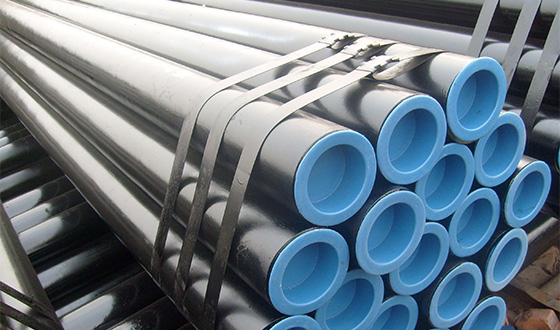-
Cangzhou Yulong Steel Co., Ltd.
-
Phone:
+86 13303177267 -
Email:
admin@ylsteelfittings.com
- English
- Arabic
- Italian
- Spanish
- Portuguese
- German
- kazakh
- Persian
- Greek
- French
- Russian
- Polish
- Thai
- Indonesian
- Vietnamese
- Zulu
- Korean
- Uzbek
- Hindi
- Serbian
- Malay
- Ukrainian
- Gujarati
- Haitian Creole
- hausa
- hawaiian
- Hebrew
- Miao
- Hungarian
- Icelandic
- igbo
- irish
- Japanese
- Javanese
- Kannada
- Khmer
- Rwandese
- Afrikaans
- Albanian
- Amharic
- Armenian
- Azerbaijani
- Basque
- Belarusian
- Bengali
- Bosnian
- Bulgarian
- Catalan
- Cebuano
- China
- China (Taiwan)
- Corsican
- Croatian
- Czech
- Danish
- Esperanto
- Estonian
- Finnish
- Frisian
- Galician
- Georgian
- Kurdish
- Kyrgyz
- Lao
- Latin
- Latvian
- Lithuanian
- Luxembourgish
- Macedonian
- Malgashi
- Malayalam
- Maltese
- Maori
- Marathi
- Mongolian
- Myanmar
- Nepali
- Norwegian
- Norwegian
- Occitan
- Pashto
- Dutch
- Punjabi
- Romanian
- Samoan
- Scottish Gaelic
- Sesotho
- Shona
- Sindhi
- Sinhala
- Slovak
- Slovenian
- Somali
- Sundanese
- Swahili
- Swedish
- Tagalog
- Tajik
- Tamil
- Tatar
- Telugu
- Turkish
- Turkmen
- Urdu
- Uighur
- Welsh
- Bantu
- Yiddish
- Yoruba

Aug . 30, 2024 20:38 Back to list
different types of flanges used in piping
Different Types of Flanges Used in Piping
Flanges play a pivotal role in piping systems, providing crucial connections between pipes, valves, pumps, and other equipment. They are critical components that ensure the structural integrity and efficiency of the piping systems. There are numerous types of flanges, each designed to serve specific purposes and fit different applications. Understanding these various types is essential for professionals in the piping and construction industries.
1. Weld Neck Flanges
Weld neck flanges are characterized by a long neck that is welded to the pipe. This design allows for a smooth flow of fluid and reduces turbulence, thereby minimizing the risk of erosion. These flanges are typically used in high-pressure applications due to their strength and ability to withstand heavy loads. They are ideal for use in critical services, such as oil and gas pipelines.
2. Slip-On Flanges
Slip-on flanges are designed to slide over the pipe, making them easy to install. They are typically welded on the top and bottom to secure them in place. These flanges are commonly used in low-pressure applications and are often preferred for their simplicity and cost-effectiveness. However, they are not suitable for high-pressure systems, as they may compromise the integrity of the connection.
3. Blind Flanges
Blind flanges are solid flanges with no opening, used to seal the end of a piping system. They are essential for maintaining pressure in sealed sections of pipe and are commonly employed in maintenance and repair work, allowing for easy isolation of sections within a system. Blind flanges come in various sizes and pressure classes, making them versatile in different applications.
4. Socket Weld Flanges
different types of flanges used in piping

Socket weld flanges are designed for use with small diameter piping systems. The pipe is inserted into the socket of the flange and then welded around the joint. This type of flange provides excellent resistance to internal pressure and is commonly used in high-pressure applications. Socket weld flanges are often found in chemical processing and petroleum industries.
5. Threaded Flanges
Threaded flanges have internal threads that allow them to screw onto the pipe without the need for welding. This feature makes them ideal for applications where welding is not feasible, such as in environments where heat could damage the surrounding materials. While they are convenient, threaded flanges are typically limited to low-pressure applications.
6. Lap Joint Flanges
Lap joint flanges are specifically designed for use with a corresponding stub end. They allow for easy alignment and assembly but do require a certain level of precision in installation. These flanges are particularly valuable in applications where frequent disassembly is necessary, such as in maintenance scenarios.
7. Orifice Flanges
Orifice flanges are designed for installation of flow measurement devices in piping systems, allowing for accurate measurement of liquid or gas flow. They are an essential component in process control and are available in various sizes and pressure ratings.
Conclusion
Understanding the different types of flanges used in piping is crucial for selecting the right component for a specific application. Each type has its advantages, disadvantages, and preferred applications. The choice of flange can significantly affect the efficiency, safety, and reliability of a piping system. Proper selection, installation, and maintenance of flanges are vital to ensuring long-term operational success in various industries. As technology and industry standards continue to evolve, ongoing education about these components remains essential for professionals in the field.
Latest news
-
ANSI 150P SS304 SO FLANGE
NewsFeb.14,2025
-
ASTM A333GR6 STEEL PIPE
NewsJan.20,2025
-
ANSI B16.5 WELDING NECK FLANGE
NewsJan.15,2026
-
ANSI B16.5 SLIP-ON FLANGE
NewsApr.19,2024
-
SABS 1123 FLANGE
NewsJan.15,2025
-
DIN86044 PLATE FLANGE
NewsApr.19,2024
-
DIN2527 BLIND FLANGE
NewsApr.12,2024
-
JIS B2311 Butt-Welding Fittings LR/SR 45°/90° /180°Seamless/Weld
NewsApr.23,2024











